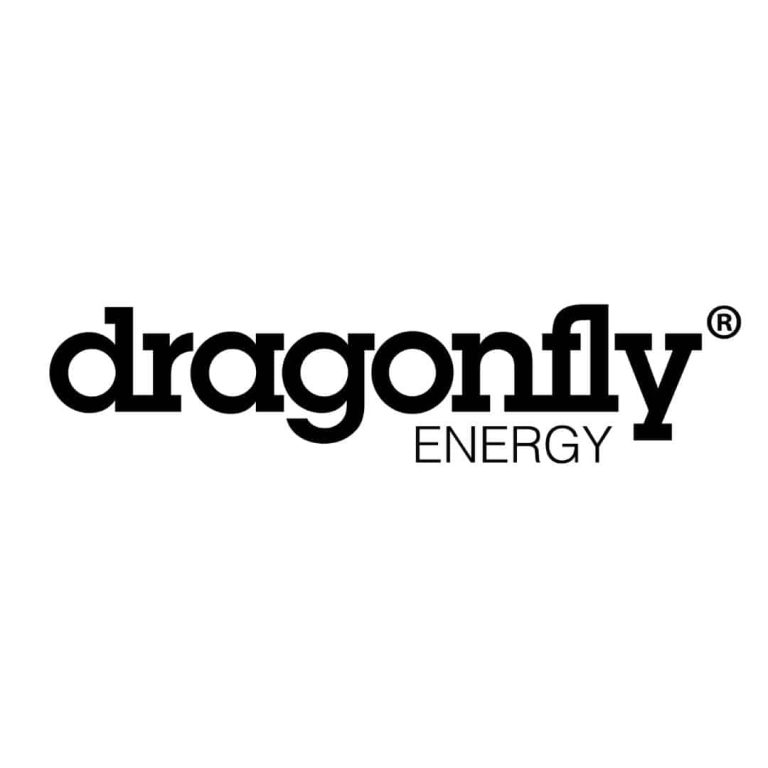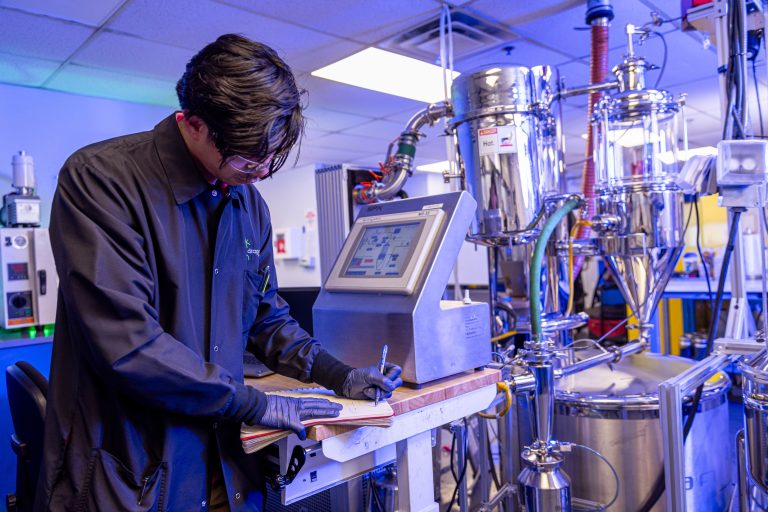Widespread accessibility to electricity, transportation, and communication changed everything about our daily lives in the 20th century. While these advancements were largely beneficial, heavy reliance on fossil fuel consumption is destroying the world around us. To reduce this negative impact, many scientists are focused on finding ways to increase the use of renewable energy resources. Using advanced energy storage solutions, we can aid the over-stressed grid and allow for the widespread adoption of renewable energy. As technology continues to advance rapidly, we explore ten common terms you need to know about energy storage on the grid.
What is an Electrical Grid?
Following the Industrial Revolution, electricity quickly spread through cities and rural areas, becoming a common utility. Power poles became ubiquitous, with transmission lines strung across, conducting electromagnetic waves to bring power to homes and businesses around the world. Individually sourced power was replaced with centralized plants that produce power and transmit it throughout the region.
Originally designed to cover small, local areas, these electrical grids have grown, stretching thousands of miles. “The grid” refers to the power lines that provide electricity, beginning where it is generated and transmitting it all the way to each customer that uses it for their daily needs. Initially, coal-fired power stations produced electricity on a mass scale by burning coal or other fossil fuels to create large amounts of energy.

While technology has evolved and improved its efficiency, fossil fuel power plants still provide most of the world’s electrical energy. Although this method of electricity generation is effective, the environmental costs continue to climb as these plants are major emitters of greenhouse gases. With the looming threat of further environmental crisis hanging above us, many organizations, individuals, and government officials are pushing to transition away from fossil fuels to renewable energy.
Renewable Energy utilizes natural, renewable resources, such as wind, solar, and hydropower to generate electricity. These resources don’t come with the constraints of finite fossil fuels and have little to no negative impact on the environment. Although this may seem like the perfect solution, their intermittency is a major limiting factor. Since the sun doesn’t always shine and the wind doesn’t always blow, there is a gap in the ability of renewable resources to provide continuous power.

Innovation in Energy Storage Leads to a More Sustainable Grid
To translate the environmental benefits of renewable energy into reliable and efficient power, a need arose for effective energy storage. Energy storage systems were created to reserve the energy generated from intermittent sources to be used later. These systems were able to maximize the amount of energy generated by renewable resources. Excess energy can be stored and then used later when the sun isn’t shining or the wind isn’t blowing.
Battery storage systems are commonly used for energy storage. As renewable sources generate energy, the batteries are charged, and reserve energy is stored and used as the battery is discharged. Implementing battery storage systems reduces the impact of intermittency and allows for the use of more renewable energy.

As the first type of rechargeable battery ever created, lead-acid batteries were the first to be implemented into energy storage systems. Although an older technology, lead-acid batteries were a less expensive option that allowed for widespread adoption. While these batteries were the first step in adding more renewable energy to the grid, their inefficiencies quickly surfaced. With a relatively short life cycle and low energy density, scientists began researching a better and more sustainable battery technology.
During the second half of the 20th century, a breakthrough in rechargeable battery research led to the earliest form of the modern Li-ion battery. In the following decades, research continued, and various forms of lithium batteries were created and tested, each one better than the last. Zeroing in on their high energy density, long cycle life, and fast charging capabilities, powerful lithium-ion batteries became commercially available. Due to their stability and safety, lithium iron phosphate (LiFePO4) batteries have become a popular option for energy storage. Continued research and innovation have led to non-flammable, solid-state technology that will pave the way for a fully sustainable grid.

10 Key Terms About Grid Energy Storage
The rapid progression of research, technology, and the pressing need for reliable and environmentally friendly power has led to many questions about the future of the electrical grid. As we grow closer to a more sustainable grid, new terminology has been created to explain the current state and future goals for the grid. We’ve compiled a list of ten key terms about grid energy storage that help explain the future of greener and more reliable power.
- Grid Resiliency: “The ability of the electrical grid to withstand and quickly recover from disturbances, such as natural disasters or equipment failures, ensuring a continuous supply of electricity to consumers.”
- Grid Parity: “The point at which the cost of producing electricity from a renewable energy source becomes equal to or lower than the cost of generating electricity from conventional sources, such as fossil fuels.”
- Grid-Scale Energy Storage: “Large-scale energy storage systems, typically with capacities of multiple megawatt-hours or more, designed to provide grid support services, such as frequency regulation, load shifting, and backup power, to help maintain grid reliability and accommodate the integration of renewable energy sources.”
- Grid-Tied System: “An energy generation or storage system that is connected to the main electrical grid, allowing for the exchange of electricity between the system and the grid.”; “An energy system connected to the electrical grid, allowing it to draw energy from or send excess energy back to the grid.”
- Decentralized Energy Generation: “The generation of electricity at or near the point of consumption, as opposed to centralized generation at large-scale power plants, which relies on long-distance transmission and distribution.”
- Microgrid: “A localized energy system that can operate independently from the main electrical grid, typically consisting of multiple distributed energy resources.”
- Smart Grid: “An electrical grid that incorporates advanced technologies, such as sensors, communication networks, and automation, to optimize energy generation, distribution, and consumption.”
- Distributed Storage: A power solution that stores the energy generated for use at a later time. When connected to the electric utility’s lower voltage distribution lines, distributed generation can help support the delivery of clean, reliable power to additional customers and reduce electricity losses along transmission and distribution lines. Smart Grids and Microgrids allow energy generation and storage from buildings and houses all over the country, harnessing renewable energy and feeding it between the consumer and the grid as demands require.
- Centralized Storage: Most commonly seen in our country for electrical power management, it is typically located where the resources are most available. These require large capital investments and have power generated from fossil fuel power plants, nuclear power plants, hydroelectric dams, wind farms, and more.
- Grid Edge: “The interface between the electrical grid and the end users, where distributed energy resources, advanced technologies, and new market opportunities are transforming the traditional model of electricity generation, transmission, and distribution.”
The Future of Renewable Resources & Grid Energy Storage
As innovative grid energy storage solutions grow more effective and affordable, we are on the cusp of a breakthrough in renewable power. Recent technological advances have put the widespread adoption of renewable energy in our sights. At Dragonfly Energy, we’re excited to be at the forefront of the development and adoption of this new technology. We’re producing batteries that solve today’s lead-acid challenges while creating next-generation solutions for tomorrow’s energy storage needs.
While the world races to standardize electric vehicles (EVs) to reduce dependence on fossil fuels, the critical need for energy storage solutions has been rejected. As more EVs are brought to market, increased power demands are adding stress to an already antiquated power grid. We’re focused on creating effective energy storage needed to support the grid enough to enable the use of more renewable energy.

We believe that we have found a way to drop the price of energy storage globally. Batteries remain the most scalable type of grid-scale storage available. Rather than continuing to rely on power plants and centralized storage, we’re focused on distributed storage systems. Creating a system of Smart Grids and Microgrids will allow energy to be generated and stored in various houses and buildings across the country.
Additionally, our revolutionary dry, solvent-free manufacturing process and the development of non-flammable, solid-state batteries can help facilitate safe and effective grid energy storage. The ability to create a battery that is safe, long-lasting, and 100% non-flammable opens the door to widespread distributed storage deployment. We imagine a future where Dragonfly’s smart storage solution will allow for less reliance on the power grid with ample access to backup power by distributing energy.


